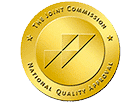Chronic pain and substance abuse are two conditions that often intertwine in a complex and destructive cycle. For many individuals, the struggle begins with an injury or illness that causes ongoing physical discomfort. Desperate for relief, they may turn to prescription pain medications, such as opioids. Over time, however, the line between pain management and substance dependence can blur, leading to a vicious cycle that is difficult to break.
What Is Chronic Pain?
Chronic pain is defined as pain that lasts longer than three to six months and persists beyond the expected period of healing. It can result from conditions such as arthritis, back injuries, fibromyalgia, nerve damage, or post-surgical complications. Chronic pain doesn’t just affect the body — it impacts every aspect of a person’s life, including mood, sleep, relationships, and overall quality of life.
Because chronic pain is invisible, sufferers may also experience emotional distress from not being believed or understood, leading to feelings of isolation, anxiety, and depression.
The Cycle of Chronic Pain and Substance Abuse
In an effort to manage the relentless pain, many people are prescribed opioid medications. While effective in the short term, these drugs carry a high risk of dependence. Tolerance can develop quickly, meaning the person needs higher doses to achieve the same relief. As dependence deepens, individuals may misuse their prescriptions or turn to illicit drugs like heroin or fentanyl when access to prescriptions is restricted.
This transition often happens gradually, driven by a desire to escape suffering rather than to get high. It is easy to see that many chronic pain sufferers have developed a prescription pill addiction, even when they are just taking the medication as prescribed. The issue with current treatment options for chronic pain is that opioids are commonly the most effective in making the patient feel a significant reduction in their pain, however, opioids are also extremely addictive and habit-forming— patients will end up building a tolerance and dependency on their painkillers, which perpetuates the cycle of chronic pain and substance abuse. Even chronic pain sufferers who have a legitimate medical purpose for opioids can end up developing an addiction to the pills pretty quickly. Then, these patients feel a constant need for this medication as it becomes seemingly the only thing that effectively reduces their pain.
Additionally, just because a medication is prescribed to treat a legitimate condition does not mean that there cannot be prescription drug misuse on behalf of the chronic pain patient. The patient may quickly grow dependent on the medication because it treats their pain, but the prescription drug abuse can quickly grow into that patient seeking prescription opioids on the street to double up or take a higher dose for more of an effect.
Self-Medicating Becomes Addiction Maintenance
As we know, many people use substances with the intent to self-medicate, which is why many people with chronic pain conditions may turn to opioids before reaching a diagnosis. This self-medicating is a way to cope with chronic pain for many people who suffer from daily pain, which brings them into a vicious cycle of dependence, tolerance, and maintenance— the drugs and the chronic pain continue to become a pattern that is hard to break out of. In addition to this nature of both conditions feeding into each other, chronic pain can also be greatly worsened during the withdrawal process. This creates extreme cravings for painkillers, as users just want the pain to be relieved.
Opioid Detox and Withdrawal
In addition to chronic pain, sufferers can also find themselves slipping into a substance use disorder as their dependency on prescription medication grows. Sufferers of chronic pain can find themselves becoming physically dependent on the drugs prescribed to them by a doctor, without expecting this dependence they enter a state of addiction maintenance to now avoid being physically ill with withdrawal and their prescription drug abuse becomes a matter of treating these new symptoms as opposed to relieving their chronic pain. Symptoms of withdrawal begin roughly 6-12 hours after the last use.
Signs and symptoms of opioid or synthetic opioid withdrawal include:
- extreme cravings
- fever
- Nausea, including vomiting
- muscle cramping
- sweating
- restlessness
- goosebumps and hot/cold flashes
- anxiety and sleep disorders like insomnia
- depression
- agitation
- muscle aches
- racing heart and heightened blood pressure (hypertension)
- diarrhea
Not Just Opioids
When you think about chronic pain, most people will associate it with opioids. However, chronic pain sufferers turn to other substances to lessen or ease their pain. Chronic pain sufferers can turn to substances like nicotine or tobacco, alcohol, and cannabis— which are also the most commonly used substances in the United States. These substances, in addition to opioids, can also worsen any pre-existing mental health disorders.
The Psychological Toll of Pain and Addiction
Substance abuse and chronic pain both affect the brain’s reward and stress systems. Over time, the brain becomes less responsive to natural sources of pleasure or relief, such as exercise, connection, or healthy coping skills. This can lead to emotional numbness, depression, and a reliance on substances not just for physical relief but for emotional escape as well.
Breaking the Cycle
Breaking the cycle of chronic pain and substance abuse requires a comprehensive, integrated approach:
Integrated Pain Management: Non-opioid medications, physical therapy, acupuncture, and other pain-reducing techniques can help reduce reliance on drugs.
Behavioral Health Treatment: Cognitive Behavioral Therapy (CBT), Dialectical Behavior Therapy (DBT), and mindfulness can help people manage pain, emotions, and cravings.
Medication-Assisted Treatment (MAT): For opioid dependence, medications like buprenorphine or methadone can help reduce withdrawal and cravings while stabilizing mood.
Dual Diagnosis Treatment: Addressing both chronic pain and substance use disorder simultaneously is essential for long-term recovery.
A Message of Hope for Opioid Addiction
Living with chronic pain and struggling with substance use can feel overwhelming, but recovery is possible. With the right support, it’s possible to manage pain without addiction and reclaim a healthier, more fulfilling life. Seeking help is the first — and most important — step toward breaking the cycle.
Light at the End of the Tunnel
A chronic pain condition can feel overwhelming and consuming, however, there is help available for chronic pain sufferers that allow them to remain drug free. At Royal Life Centers, we take any chronic pain conditions into account when our clinicians and guests build an individualized treatment plan that is tailored specifically to meet their needs, goals, and circumstances. Chronic pain may leave you feeling hopeless, but there is hope for a better life— a life filled with happiness, health, and meaning in sobriety. Please reach out to us if you, a family member, or a friend is suffering from chronic pain and substance abuse.
If you or someone you know is struggling with an addiction, please reach out to our addiction specialists at (877)-RECOVERY or (877)-732-6837. Our team of addiction specialists is available to take your call 24 hours a day, 7 days a week. Because We Care.
REFERENCES:
- Chronic pain, chronic stress and substance use: overlapping mechanisms and implications
- Patients’ perceptions of the pathways linking chronic pain with problematic substance use
- National Opioids Crisis: Help and Resources
- Opioids
- Preventing Opioid Use Disorder
- Risk Factors for Opioid Misuse, Addiction, and Overdose




